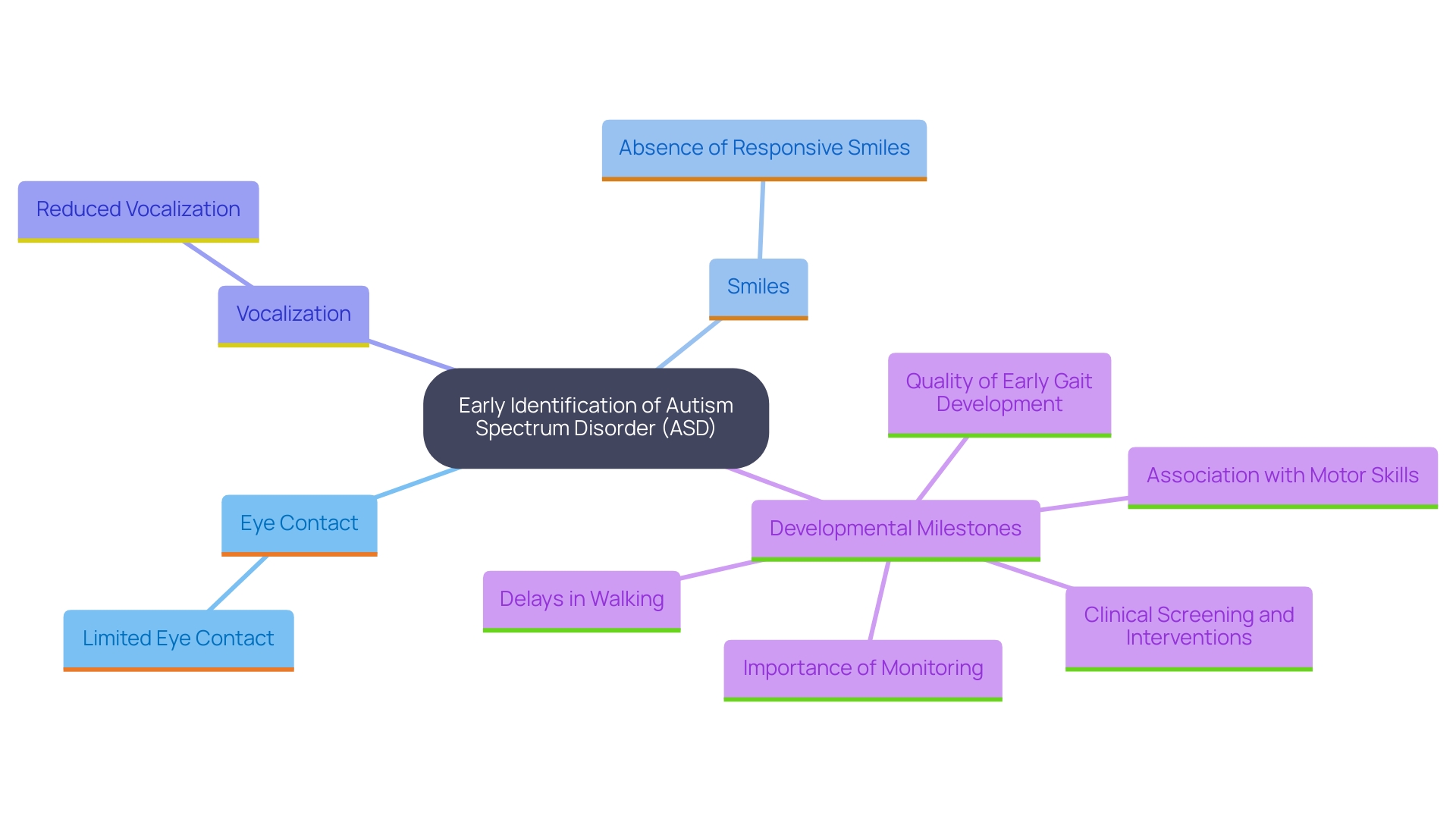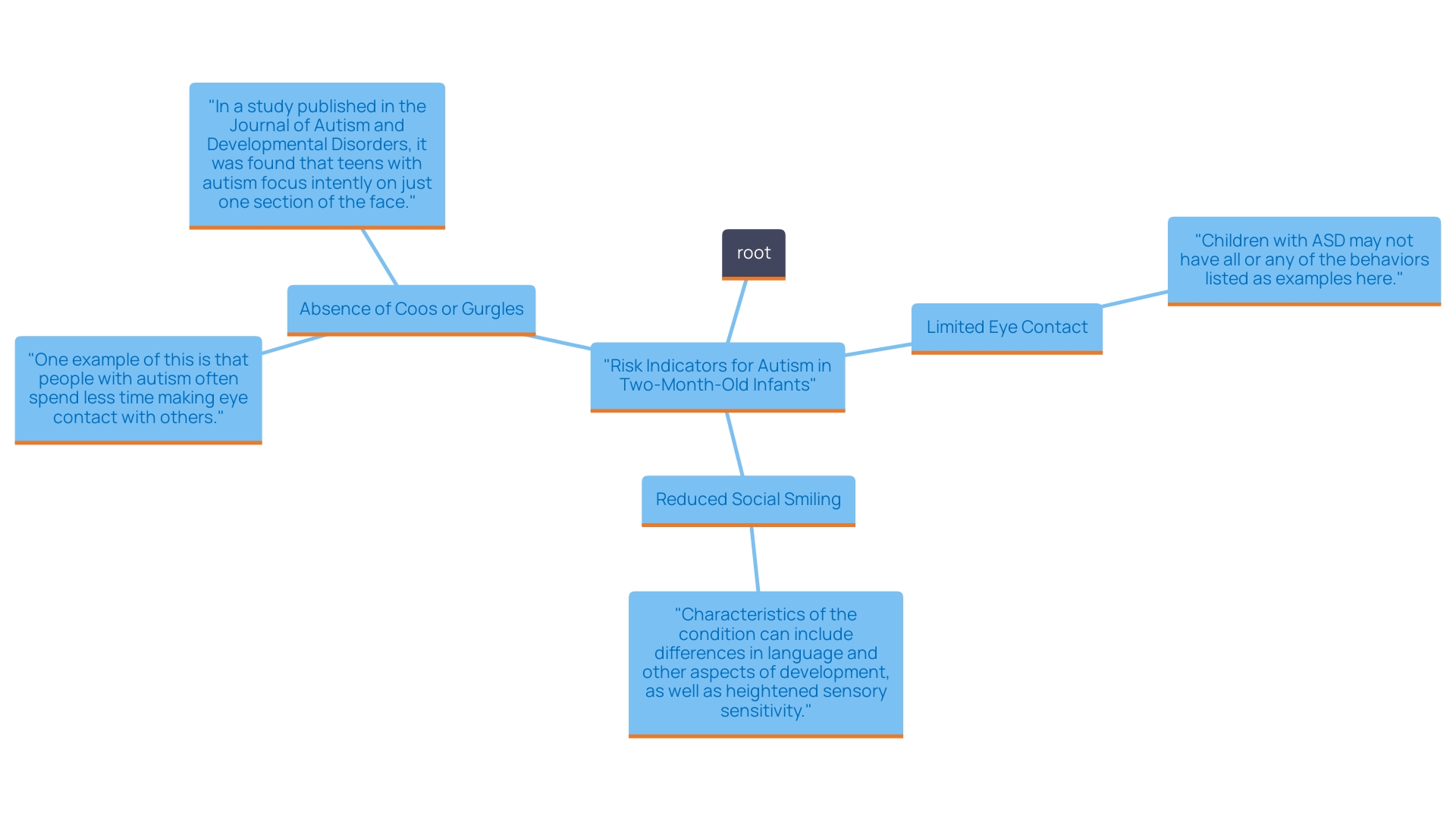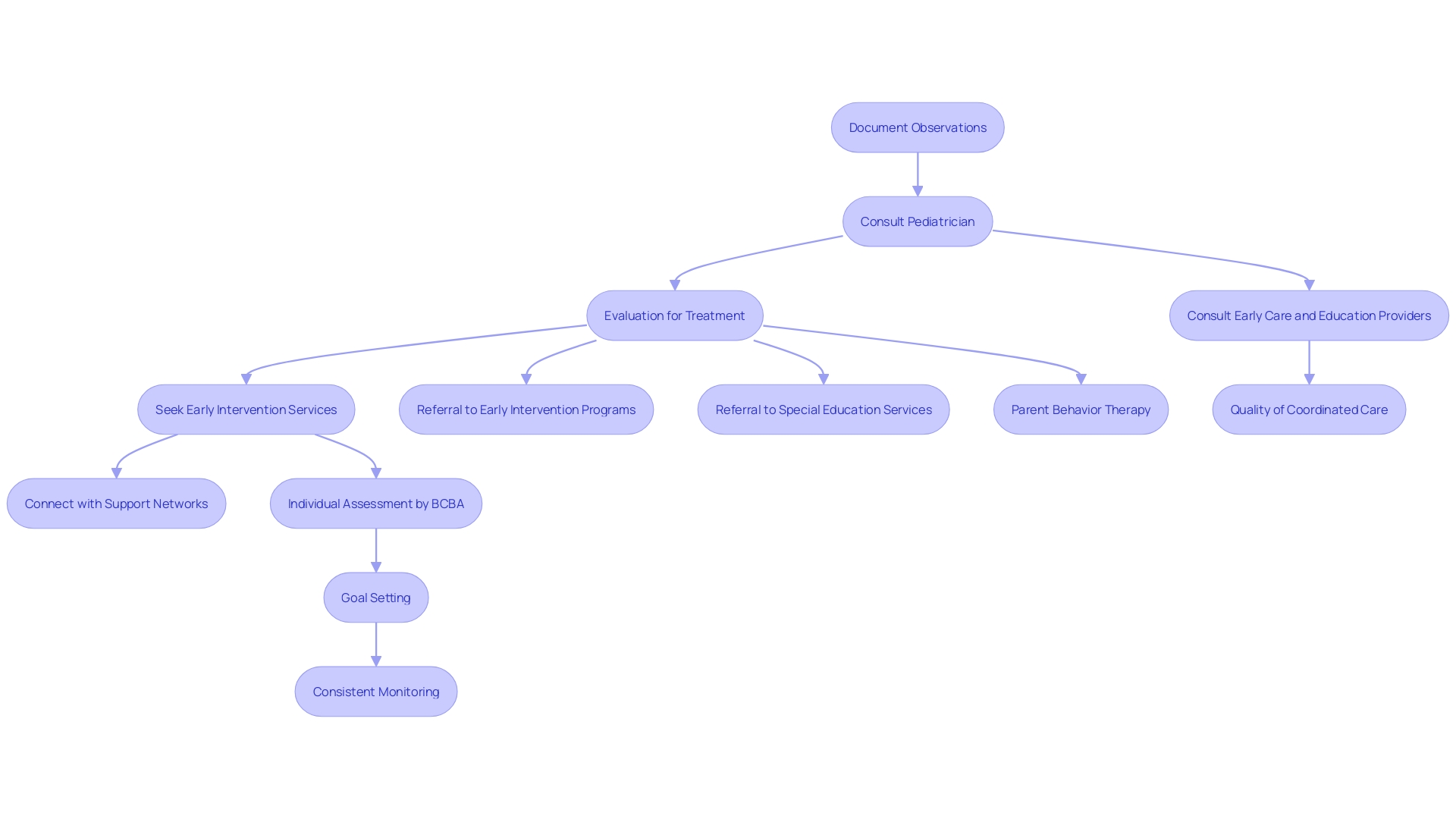Introduction
Navigating the early stages of a child's development can be both exhilarating and daunting, especially for parents who are keenly attuned to their child's growth. Autism Spectrum Disorder (ASD) presents unique challenges, making early recognition of its signs crucial for effective intervention. By understanding the subtle indicators of autism, such as limited eye contact or reduced vocalization, parents can take proactive steps to ensure their child receives the support they need.
This article delves into the early signs of autism in infants, outlines key behaviors to monitor, and provides actionable guidance for parents who may have concerns about their child's development. Empowering parents with knowledge and resources can pave the way for a supportive journey through the complexities of autism.
Understanding Autism: An Overview of Early Signs in Infants
Autism Spectrum Disorder (ASD) is a condition marked by difficulties in social interaction, communication, and behavior. Early identification of autism can significantly enhance the effectiveness of interventions. Parents should be aware that developmental milestones differ, but certain early indicators can suggest the need for further evaluation. Typical indicators may involve:
- Limited eye contact
- Absence of responsive smiles
- Reduced vocalization
Comprehending these early indicators enables parents to oversee their child's development closely and seek assistance when necessary.

Key Signs of Autism to Look for in Babies Aged 2 Months
At two months old, some signs that may indicate a risk for autism include:
- Limited Eye Contact: While infants may not focus on faces for long periods, they should still occasionally make eye contact with caregivers.
- Reduced Social Smiling: Infants typically respond to social interactions with smiles. If a baby seldom smiles in response to others, it may warrant attention.
- Absence of Coos or Gurgles: By this age, babies often begin to make cooing sounds. A noticeable lack of vocalization could indicate a developmental concern.
Observing these behaviors can help parents chart their offspring's development and take appropriate steps if necessary.

Taking Action: What Parents Should Do If They Notice Signs of Autism
If you notice signs of autism in your two-month-old baby, consider the following steps:
- Document Observations: Keep a record of the behaviors you have observed, including dates and specific examples. This documentation can be vital during consultations.
- Consult Your Pediatrician: Schedule an appointment to discuss your concerns with your kid's doctor. They can offer insight, carry out assessments, and refer you to specialists if needed.
- Seek Early Intervention Services: If a diagnosis is made, engaging with early intervention services can provide valuable support tailored to your needs. Early action can significantly impact developmental outcomes.
- Connect with Support Networks: Reach out to local or online support groups for parents of children with autism. Sharing experiences and resources can provide emotional support and practical advice during this journey.

Conclusion
Recognizing the early signs of Autism Spectrum Disorder (ASD) in infants is a critical step for parents seeking to support their child's development. Key indicators such as limited eye contact, reduced social smiling, and absence of cooing sounds can serve as vital clues that warrant further evaluation. By being vigilant and observant, parents can take proactive measures to ensure their child receives the attention and care they may need.
Taking action when concerns arise is equally important. Documenting observations, consulting with pediatricians, and seeking early intervention services can significantly enhance the effectiveness of support available to children diagnosed with autism. Additionally, connecting with support networks can provide invaluable resources and emotional backing, fostering a sense of community among parents navigating similar challenges.
Empowering parents with knowledge and actionable steps not only promotes early identification of autism but also paves the way for positive developmental outcomes. By staying informed and engaged, parents can play a pivotal role in their child's journey, ensuring they receive the necessary support to thrive.




